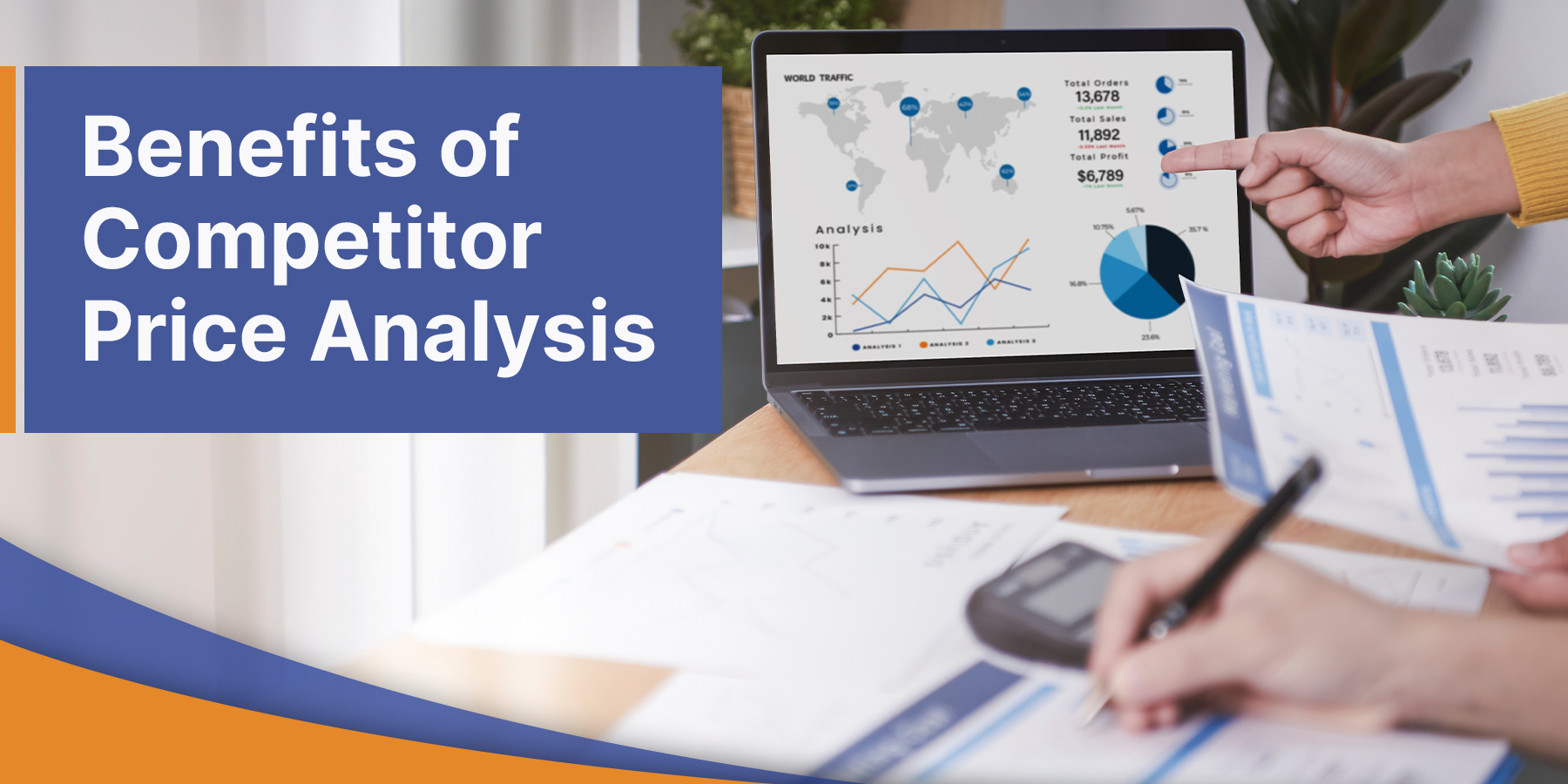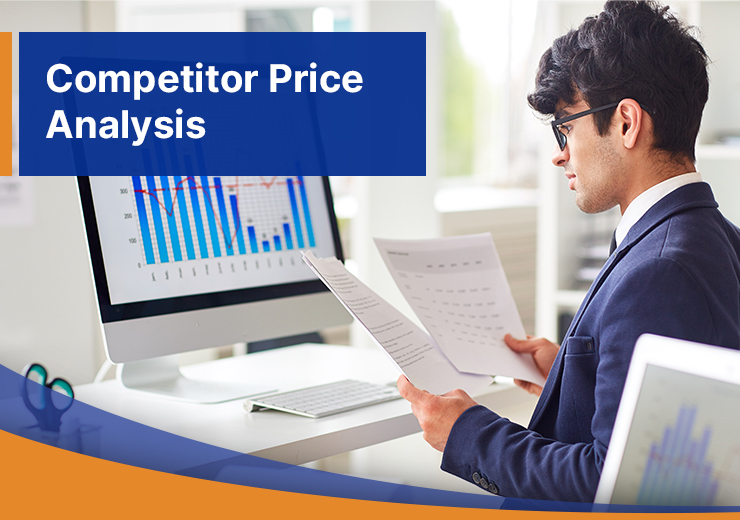
In today’s marketplace, competitor price analysis is the buzzword. The marketplace is cluttered with many vendors who are selling the same product. Thus, leaving the consumer spoilt for choice. Therefore, when the competition is at an all-time high, the product has the best pricing strategy that can stand out from the crowd.
Competitor Price Analysis
Experts will agree that the price comparison has never been as aggressive as now. The marketplace is dynamic. Consumers are well-read. Before they purchase a product from a particular vendor, they do their homework well. Most customers purchase a product because it costs a little less than what its competitors are quoting. A section of business owners loses out on customers simply because they sell their products at a higher cost than their rivals. Customers these days are well aware of the available options and always like to settle only for the best deal.
When customers are savvy, the time has come for business owners to get smarter
With savvy customers, business owners aiming to sell their products in the cluttered marketplace can survive the competition only if they make intelligent decisions regarding price. Against the backdrop of this, competitive intelligence proves to be a real game-changer.
Why is there a need for Competitor Price Analysis?
In the global marketplace, only the fittest can survive. To survive, a business owner must make sure that he delivers the best to the customers and have a close watch on his competitors. The business owner must understand and analyze the strengths and weaknesses of his rivals, compare them with his own and thus identify the gap in the market and fill it. There is a need for implementing a Competitor Price Analysis as it helps enhance brand image and strengthen brand visibility in the market. For a brand to stay alive in the market, it is necessary to do a product analysis and research pricing strategies before implementing the best pricing strategy. Competitor Price Analysis is one of the essential elements of competitor analysis.
Through Competitor Price Analysis, consumers’ reactions to new prices can be evaluated
An increasing number of companies are embracing the concept of Competitor Price Analysis. The end consumers’ reaction to new prices can be evaluated through this means. Costs incurred and costs and potential profits of the business are not considered while examining the consumers’ response to price. Furthermore, research-based tools and historical data and survey polls are used in the exercise.
A classic example of competitive pricing
Let us understand the competitive pricing concept with an example. Regardless of their size and product portfolio, several companies and brands use the competitor price analysis strategy. A classic example is retail giant Amazon. According to sources, it is learned that the retail giant gathers competitive price intelligence and uses it to offer the lowest price in the market. This is how Amazon successfully achieves a price advantage over its competitors. Not only Amazon, but several companies are also using this technique to stay ahead of their rivals in the market.
How does the competitor pricing method work?
The strategy takes into consideration the selling price of the rivals’ products. Before setting the selling price of its product, the company considers the competition. This strategy, however, does not cover initial costs. In the next section of the blog, we have discussed why we have to do Competitor Price Analysis.
Why do we have to do competitor price analysis?
Any business aims to reap profits. The business owner must sell his products to increase sales and register profits. Therefore, it becomes essential for the business owner to sell the products competitively. He must necessarily sell his products for a lower price compared to his competitors. By doing this, he will automatically sell more products compared to his competitors and register more sales and greater profits. This will give him an edge over his business rivals. Various strategies are used to determine and conclude at what price must the product be sold. Competitor Price Analysis gives business owners insights in this direction.
How is competitor price analysis done?
Now that we have understood what competitor price analysis is, let us discuss how it is done. Business owners will agree that the competition is enormous in the market. Additionally, the size of the business owner’s product portfolio also varies. Thus, it is next to impossible for the business owner to manually track the product price of the rivals. Using tools and technology, competitor price analysis can be performed. It is possible to do the competitor price analysis manually. However, the process will consume time. According to data, manually tracking the price of as many as 100 products from about 10 competitor websites can easily take a minimum of 12.5 hours by an average individual. Thus, experts highly recommend business owners use various tools and technology. When price tracking and dynamic pricing tools are used, the outcome is seamless. With this, the business owner can opt to price his product the cheapest in the market.
Additionally, the business owner can select to position his product where most of the competitors are cluttered. He can also position his product at the highest price, where luxury brands are clustered. Thus, it can be argued that dynamic pricing rules help the business owner determine a pricing position for his product, thus setting him in a comfortable lead compared to his competitors.
How to implement a competitive pricing analysis?
Implementing the competitive pricing analysis is no rocket science. Discussed below are the steps involved in the process:-
1. Determine data quality
Data is essential in the competitive pricing analysis process. It is through data that competitors can be analyzed. High-quality data must necessarily contain the following parameter:-
Depth of comparisons: The business owner must consider all aspects related to product information. Product information includes technical features and facts, color, and other product information. Such information must be obtained from reliable sources as there are chances that product specifications might not be printed on the product label.
Percentage of errors: The lower the percentage of errors, the better. This can be avoided when using automatic tools and solutions. Manual methods work. However, the chances of error are high, and manual methods are time consuming.
Use only the latest data: To improve accuracy, business owners must use only the latest updated data. It is advised that data gathered no later than a couple of hours before determining the price can be used.
2. Define data parameters
The next step is to carefully determine the critical data parameters of the competitive data to analyze for the pricing process. A few parameters that can be monitored include:-
Price index: The business owner can learn the retailer’s position for the given product over a determined period by analyzing the price index.
Promotional initiatives of the competitors: The rivals, at regular intervals, organize and host promotional activities. Therefore, as a business owner, it is essential to have a close watch on the promotional initiatives of the competitors.
Product availability of competitors: By having a closer look at the availability of the competitor’s products, the business owner can determine the selling price of his products. The business owner can adjust prices.
It must be noted that competitor price analysis requires a thorough study of the competitors’ data. It is impossible to set a price without researching the various aspects of the competitors’. When comparing with the competitors, it will also help the business owner determine his position in the market and set the selling price of the product.
3. Categorize Competitors
Once the competitors’ are analyzed, it is essential to categorize them. The categorization can be done on various parameters, including primary, secondary and tertiary. In addition, the products can be categorized based on their type and market segment.
Partner with Vserve business for competitor price analysis services for your business
When you partner with Vserve for your business’s competitor price analysis services, your time is managed effectively as a team of skilled experts and experienced professionals will provide you with the final result daily. With services from Vserve, as a business owner, you can be assured of increased sales as the team can help you make your critical pricing decisions ensuring that you provide the best offer in the market and increase your sales and profits considerably. Additionally, at Vserve, we have our best people working to make your pricing problems disappear. With that covered, you can employ your resources in other avenues to raise your margins. So call us for a quote today and get started with us.







